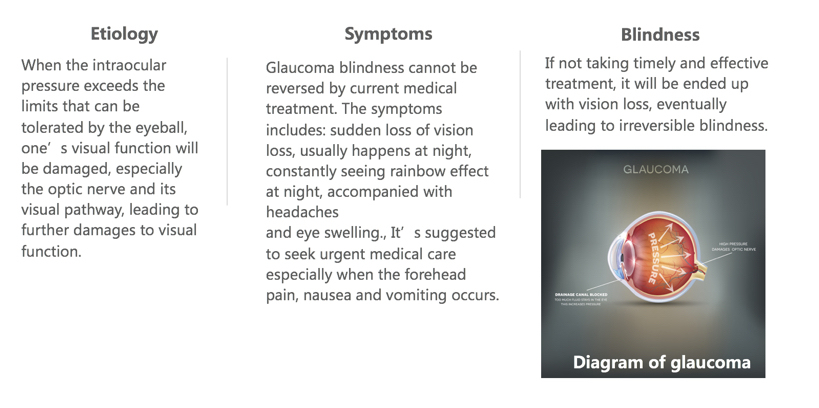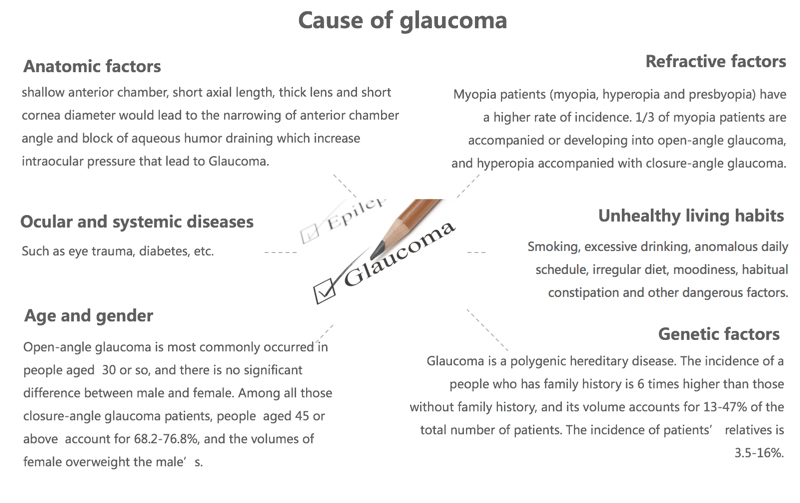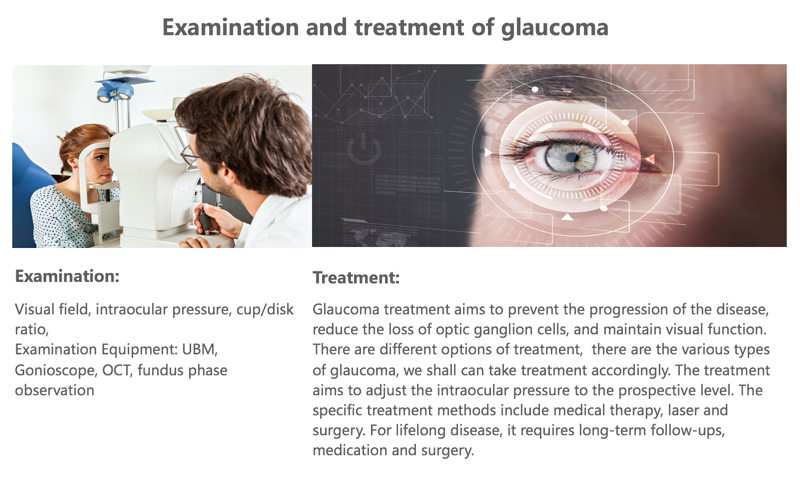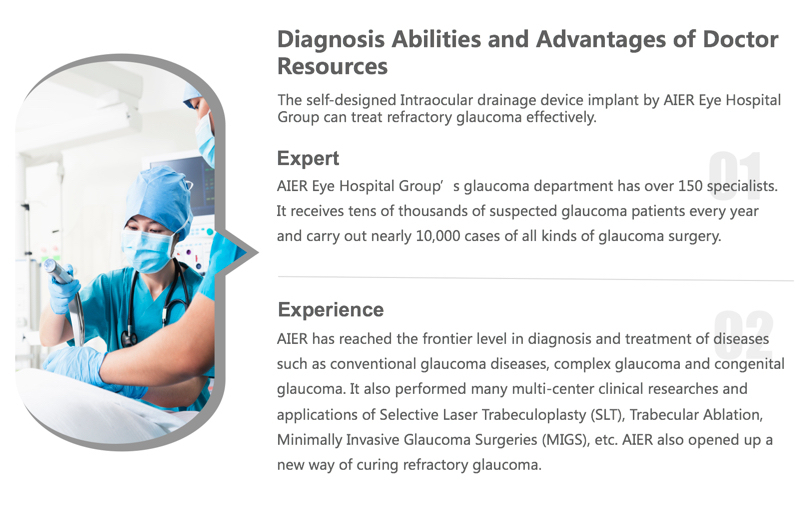Glaucoma
2022-11-24 17:20:14




Etiology When the intraocular pressure exceeds the limits that can be tolerated by the eyeball, one’s visual function will be damaged, especially the optic nerve and its visual pathway, leading to further damages to visual function.
Symptoms Glaucoma blindness cannot be reversed by current medical treatment. The symptoms includes: sudden loss of vision loss, usually happens at night, constantly seeing rainbow effect at night, accompanied with headaches
and eye swelling., It’s suggested to seek urgent medical care especially when the forehead pain, nausea and vomiting occurs.
Blindness If not taking timely and effective treatment, it will be ended up with vision loss, eventually leading to irreversible blindness.
Anatomic factors shallow anterior chamber, short axial length, thick lens and short cornea diameter would lead to the narrowing of anterior chamber angle and block of aqueous humor draining which increase intraocular pressure that lead to Glaucoma. Ocular and systemic disease Such as eye trauma, diabetes, etc. Age and gender Open-angle glaucoma is most commonly occurred in people aged 30 or so, and there is no significant difference between male and female. Among all those closure-angle glaucoma patients, people aged 45 or above account for 68.2-76.8%, and the volumes of female overweight the male’s. Refractive factors Myopia patients (myopia, hyperopia and presbyopia) have a higher rate of incidence. 1/3 of myopia patients are accompanied or developing into open-angle glaucoma, and hyperopia accompanied with closure-angle glaucoma. Unhealthy living habits Smoking, excessive drinking, anomalous daily schedule, irregular diet, moodiness, habitual constipation and other dangerous factors. Genetic factors Glaucoma is a polygenic hereditary disease. The incidence of a people who has family history is 6 times higher than those without family history, and its volume accounts for 13-47% of the total number of patients. The incidence of patients’ relatives is 3.5-16%.
Examination: Visual field, intraocular pressure, cup/disk ratio,
Examination Equipment: UBM, Gonioscope, OCT, fundus phase observation Treatment: Glaucoma treatment aims to prevent the progression of the disease, reduce the loss of optic ganglion cells, and maintain visual function. There are different options of treatment, there are the various types of glaucoma, we shall can take treatment accordingly. The treatment aims to adjust the intraocular pressure to the prospective level. The specific treatment methods include medical therapy, laser and surgery. For lifelong disease, it requires long-term follow-ups, medication and surgery.
Diagnosis Abilities and Advantages of Doctor Resources The self-designed Intraocular drainage device implant by AIER Eye Hospital Group can treat refractory glaucoma effectively. Expert AIER Eye Hospital Group’s glaucoma department has over 150 specialists. It receives tens of thousands of suspected glaucoma patients every year and carry out nearly 10,000 cases of all kinds of glaucoma surgery. Experience AIER has reached the frontier level in diagnosis and treatment of diseases such as conventional glaucoma diseases, complex glaucoma and congenital glaucoma. It also performed many multi-center clinical researches and applications of Selective Laser Trabeculoplasty (SLT), Trabecular Ablation, Minimally Invasive Glaucoma Surgeries (MIGS), etc. AIER also opened up a new way of curing refractory glaucoma.







